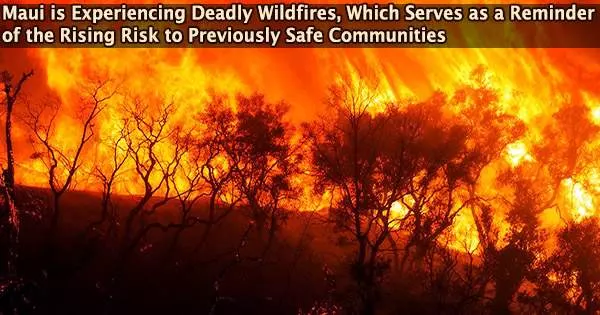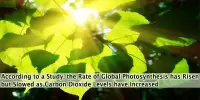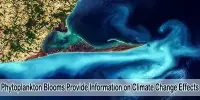On August 8 and 9, 2023, wildfires swept through Lahaina, Hawaii, being pushed by strong winds. The tourist town, which has a population of roughly 13,000 and was formerly the capital of the Kingdom of Hawaii, was left with a charred and burning landscape. At least six people died, Maui Mayor Richard Bissen told reporters. The U.S. Coast Guard rescued others after going into the ocean to escape the flames.
Fires were still burning on the evening of August 9, 2023, both in Maui’s tourist-filled west coast and farther inland, as well as on the Big Island of Hawaii. The chance of a fire was increased by dry grass and strong winds brought on by Hurricane Dora, which passed well to the south.
The majority of fires in the United States are put out before they can pose a threat to nearby populations, but on the first day of Maui’s fires, the winds were too strong for helicopters to be sent into the air to help with containment, so firefighters had to fight the blazes from the ground.
Lt. Gov. Sylvia Luke issued an emergency declaration, activating the National Guard to help, and urged travelers to stay away.
Fires have become an increasing risk in many areas of the U.S. that people once considered safe.
Over the past two decades, a staggering 21.8 million Americans found themselves living within 3 miles (5 kilometers) of a large wildfire. Nearly 600,000 of them were directly exposed to the fire, with their homes inside the wildfire perimeter. That number of people directly exposed to wildfires more than doubled from 2000 to 2019, my team’s recent research shows.
But while commentators often blame the rising risk on homebuilders pushing deeper into the wildland areas, we found that the population growth in these high-risk areas explained only a small part of the increase in the number of people who were exposed to wildfires.
Instead, intense fires growing out of control and encroaching on existing communities drove three-quarters of this trend.
This information has consequences for how communities respond to population growth, how they plan for future wildfires, and whether or not policy measures like raising insurance prices to lower losses would be successful.
What climate change has to do with wildfires
Hot, dry weather pulls moisture from plants and soil, leaving dry fuel that can easily burn. A wildfire can be swiftly started on a windy day by a spark from a power line, campfire, or lightning.
Recent studies on Californian wildfires discovered that anthropogenic climate change brought on by human activities was responsible for nearly all of the state’s recent rise in burned areas.
Our new research looked beyond just the area burned and asked: Where were people exposed to wildfires, and why?
Where wildfire exposure was highest
I am a climate scientist who studies the wildfire-climate relationship and its socioenvironmental impacts. Colleagues and I analyzed the boundaries of more than 15,000 large wildfires across the lower 48 states and annual population distribution data to estimate the number of people exposed to those fires.
If you picture wildfire photos taken from a plane, fires generally burn in patches rather than as a wall of flame. Pockets of homes within the fire boundary survive, but many also burn.
We discovered that, even though the population has increased in the wildland-urban interface the area where homes coexist with forests, shrublands, or grasslands only about 25% of the increase in the number of people who have been directly exposed to wildfires in the lower 48 states between 2000 and 2019 can be attributed to population growth.
Three-quarters of the 125% increase in exposure was due to fires increasingly encroaching on existing communities. The total burned area increased only 38%, but the locations of intense fires near towns and cities put lives at risk.
In California, the state with the most people exposed to fires, several wildfire catastrophes hit communities that had existed long before 2000. Almost all these catastrophes occurred during dry, hot, windy conditions that have become increasingly frequent because of climate change.
What communities can do to lower the risk
Studies have shown that even in conservative scenarios, the amount of area that burns in Western wildfires is projected to grow in the next few decades. How much these fires grow and how intense they become depends largely on warming trends.
Reducing greenhouse gas emissions will help slow warming. But communities will also have to adapt to more wildfires. It is possible to stop fires from spreading and becoming devastating by creating community-level wildfire response plans, minimizing human-caused wildfire ignitions, and improving zoning and building laws.
















